
1 Winter aconite
ERANTHIS HYEMALIS, ZONES 4 TO 7
Tough and resilient, winter aconites provide brilliant yellow morsels of joy in the garden as they begin to awaken around March in many areas. The tubers multiply over time, providing even more brilliant color. The low, buttercuplike flower's frilly green collar accents the yellow petals. Full to part sun is ideal.
Why we love it: This low-grower shines along pathways, is exceptionally deer resistant, and can even grow under black walnut trees.
2 Camas
CAMASSIA LEICHTLINII SSP. SUKSDORFII, ZONES 5 TO 9
Lovely stalks of blue-purple star-shaped flowers grow up to 4 feet tall and bloom from April to May. Camas plants tolerate a range of soils from clay to wet or dry ground and work well in rain gardens. The flowers come in an array of colors, including white, purple, blue, and cream. The yellow anthers make flower petals pop.
Why we love it: Camas is native to the western U.S., and bees appreciate the pollen in late spring.
3 Pagoda trout lily
ERYTHRONIUM CALIFORNICUM, ZONES 3 TO 9
Pagoda is one of the largest trout lilies, standing up to a foot tall. With sulfur yellow flowers, it brightens partly shaded gardens, and deer and rabbits leave it alone. This lily goes dormant after blooming, so plant it among perennials that start to shine in early summer.
Why we love it: In addition to the bright flowers, the plant's leaves are a glossy green, sporting bronze and maroon markings that fade later in the season.
CONTINUED COLOR Many of these plants lose interest in summer. Grow ground covers, such as yellowroot shrubs, ostrich ferns, or hostas, around the bulbs to disguise their wilted stems and leaves. The ground covers' foliage keeps plots lush and green.
Bu hikaye Birds & Blooms dergisinin October/November 2022 sayısından alınmıştır.
Start your 7-day Magzter GOLD free trial to access thousands of curated premium stories, and 9,000+ magazines and newspapers.
Already a subscriber ? Giriş Yap
Bu hikaye Birds & Blooms dergisinin October/November 2022 sayısından alınmıştır.
Start your 7-day Magzter GOLD free trial to access thousands of curated premium stories, and 9,000+ magazines and newspapers.
Already a subscriber? Giriş Yap
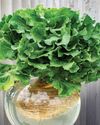
Basics of Hydroponics
Use these top tips and plant picks to have a successful soil-free garden
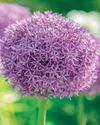
Rooted in Resilience
These hardy perennials will thrive in most zones
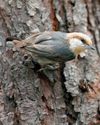
Social and Supportive
Brown-headed nuthatches take a helpful approach to raising their young

All About Owl Pellets
And why you should give a hoot about them
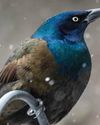
Ask the Experts
Advice from our pros about houseplants, bird feeding and more

BRING THE OUTDOORS IN
Making a terrarium is about as close as you can get to a Zen DIY project. Once you have gathered the proper materials and squared away your plant selections, it's as simple as layering it all together and watching your mini ecosystem thrive. Here, I'll walk you through my foolproof process and cover all the required elements for good filtration, healthy soil, strong root growth and resistance against fungus and disease.

GROW THIS. NOT THAT
Six easy-to-grow houseplants—and six that may not be the right choice for you
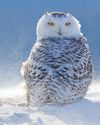
Winter MAGIC
Forecasts may be frigid, but grab your binoculars because birding opportunities are still incredible

Sense or Nonsense? - Why some birds can taste and smell - but others can't
Does a porcelain berry taste like a blueberry to a gray catbird? Does a block of lard smell like frying bacon to a northern flicker? The short answer is no. While some avian species do have a well-adapted sense of taste or smell, they can't distinguish between flavors and odors the way humans can. They're not picking up every ingredient in the suet you put out, says José Ramírez-Garofalo, an ornithology researcher at Rutgers University in New Jersey and the director of Freshkills Biological Station in Staten Island, New York.
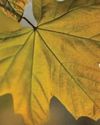
Maple Mania - Amazing facts about this fall foliage mainstay
Amazing facts about this fall foliage mainstay